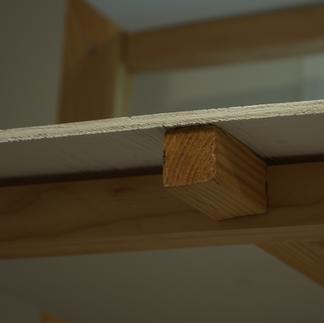Updated: 4 days ago
This is for sending to those who are in positions to do something about it. Feel free to add your information to it and send it along.

Reclaiming Our Watersheds—How AI Can Repair the Fragmentation That Let POPs Poison Our Communities
Dear [Name/Title],
If we had designed cities with stormwater as an asset—not a liability—our communities and ecosystems might look very different today.
Had we integrated green infrastructure from the start—bioswales, rain gardens, permeable roads, decentralized treatment—stormwater wouldn’t be a polluted torrent we flush away, but a regenerative resource. Our rivers might still run clear. Our aquifers might still be full. And our most vulnerable citizens—children in underserved neighborhoods—might not carry the toxic burden of persistent organic pollutants (POPs) in their blood.
Instead, the systems we built more than a century ago prioritized speed of removal over quality of retention. The result is a fragmented, siloed stormwater regime in Ontario and beyond—one that ignores pollutant accumulation and disproportionately affects low-income communities.
The Human Cost of This Fragmentation
Today, stormwater runoff delivers POPs like PFAS, PCBs, PAHs, and pesticides directly into the air, soil, and water around urban dwellers. These chemicals are:
Endocrine disruptors that impair fertility and development
Neurotoxins associated with autism spectrum disorders, lowered IQ, and attention deficits in children
Immunosuppressants that reduce vaccine efficacy—a public health risk of growing urgency
And due to the geography of poverty, it's no surprise that marginalized and racialized communities—often located near high-runoff zones—bear the brunt. POPs don’t just pollute water; they pollute opportunity: by degrading cognition, weakening immunity, and reinforcing cycles of disadvantage.
Had our stormwater systems been designed to filter, slow, and recharge instead of just drain, these pollutants could have been captured or degraded. The burden on our healthcare systems could be lower. Our public health metrics—especially in underserved areas—could be stronger.
AI as a Path to Systemic Correction
Today, we have a chance to reclaim what was lost—not just with infrastructure, but with intelligence. Artificial Intelligence can now help overcome the very governance fragmentation that created these gaps.
I propose Ontario undertake a pilot that uses AI to:
Map Fragmented JurisdictionsAI can scan bylaws, planning frameworks, and provincial statutes to identify overlaps and gaps in stormwater responsibility—creating a digital governance map that makes collaboration possible.
Automate Coordination WorkflowsA shared AI platform can streamline multi-agency decision-making by guiding stormwater project proposals through permissions, design reviews, and data sharing, while maintaining compliance and accountability.
Predict and Prioritize POPs Risk ZonesMachine learning models trained on land use, demographics, and hydrology can identify “hot spots” where runoff and health risks intersect—targeting resources where they’ll matter most.
Drive Equity Through Environmental Health IntelligenceAI can help measure and visualize how reduced pollution could improve outcomes like cognitive function, school performance, and vaccine efficacy in lower-income zones.
An Invitation
Let’s fix the stormwater systems we inherited—and the injustices they perpetuated—by finally aligning our governance structures to match our technological capabilities and moral obligations.
I urge the Ministry of Environment, Conservation & Parks, TRCA, local municipalities, and conservation authorities to consider this AI-integrated governance pilot for the Greater Toronto Area or Lake Simcoe watershed.
This is more than an infrastructure issue—it’s a matter of public health, economic justice, and environmental resilience. We now have the tools. Let’s not wait another generation.
Sincerely,
[Your Name]
[Your Title / Affiliation]













